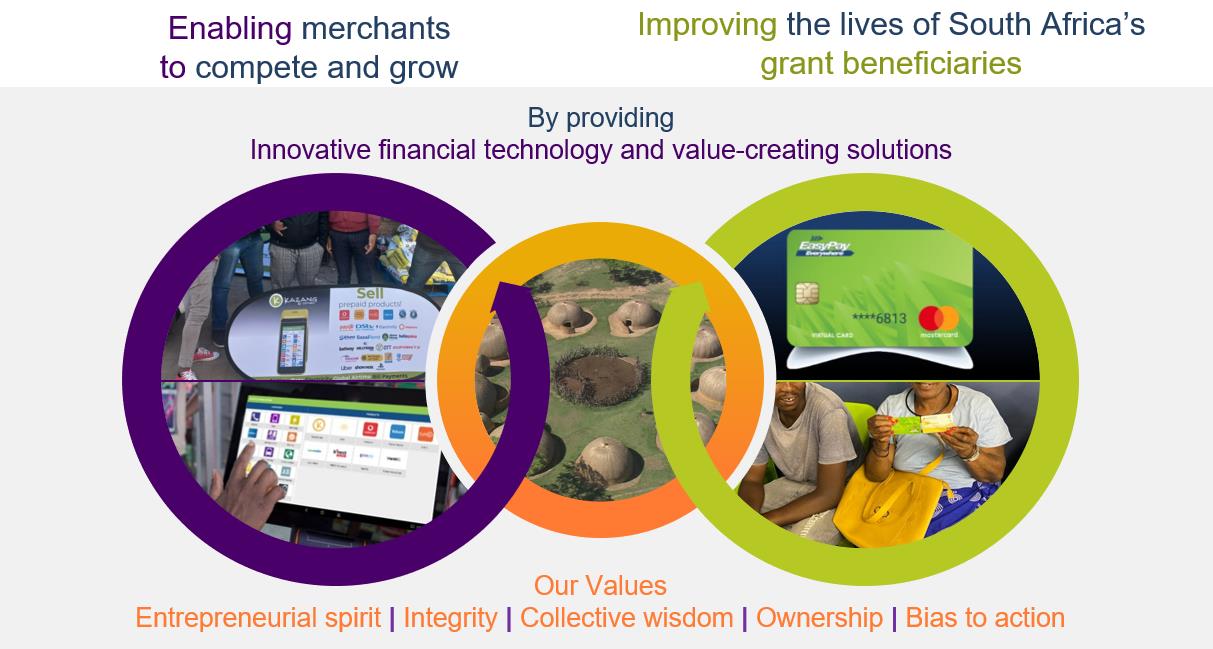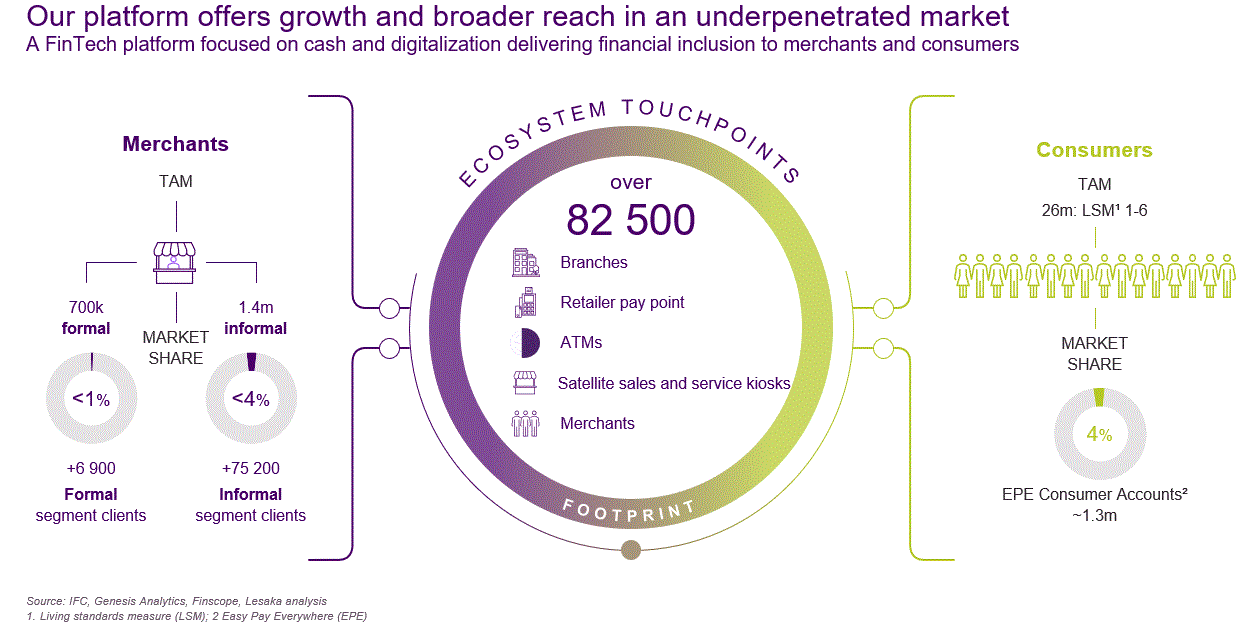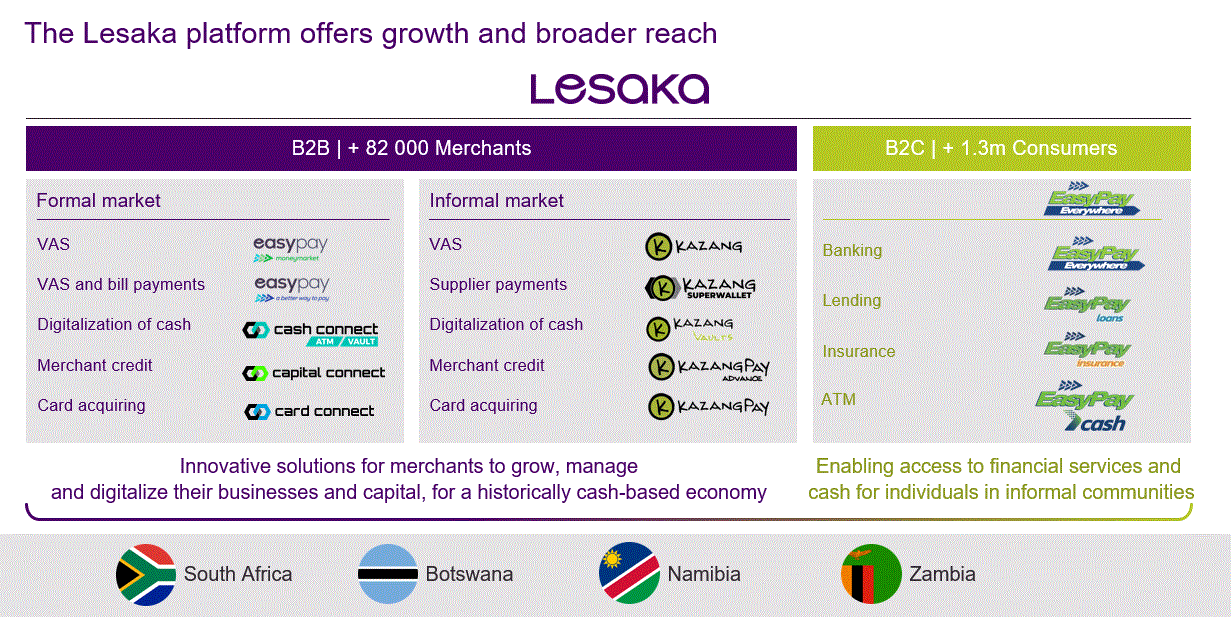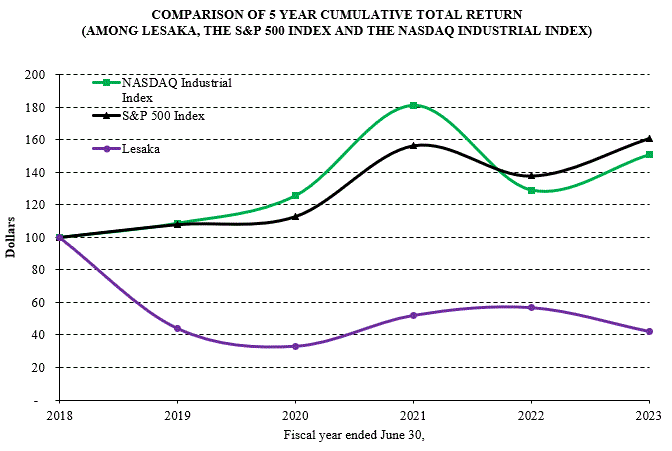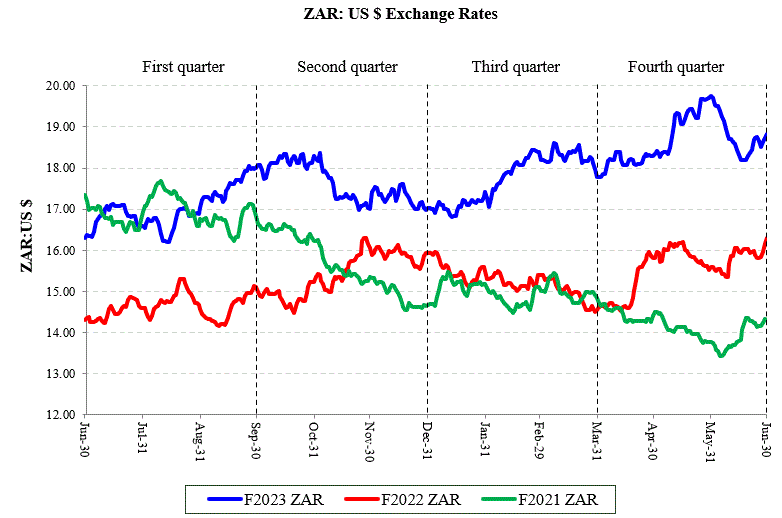LESAKA TECHNOLOGIES, INC.
CONSOLIDATED STATEMENT
OF CASHFLOWS
for the years ended June 30, 2023, 2022 and 2021
F-10
2023
2022
2021
(In thousands)
Cash flows from operating activities
Net loss
$
(35,074)
$
(43,876)
$
(38,057)
Adjustments to reconcile net loss to net cash used in operating activities:
Depreciation and amortization
23,685
7,575
4,347
Impairment loss (Note 10)
7,039
-
-
Movement in allowance for doubtful accounts receivable
6,495
1,551
110
Fair value adjustment related to financial liabilities
(20)
(466)
840
(Profit) Loss on disposal of property, plant and equipment
(468)
(2,849)
480
Stock-based compensation charge (Note 17)
7,309
2,962
344
Change in fair value of equity securities (Note 6 and 9)
-
-
(49,304)
Gain on disposal of equity securities (9)
-
(720)
-
Loss on disposal of equity-accounted investment (9)
205
376
13
Loss on disposal of Bank Frick (9)
-
-
472
Interest payable
5,069
9
(1)
Facility fee amortized (Note 12)
864
251
-
Loss from equity-accounted investments (Note 9)
5,117
3,649
24,878
Movement in allowance for doubtful loans to equity-accounted investments
-
38
4,739
Dividends received from equity-accounted investments
42
155
194
Changes in net working capital
(Increase) Decrease in accounts receivable (Note 20)
(1,687)
11,102
6,505
Increase in finance loans receivable (Note 20)
(12,353)
(2,047)
(2,754)
Decrease (Increase) in inventory
2,172
(4,820)
1,279
Increase (Decrease) in accounts payable and other payables
1,705
(8,851)
(335)
(Decrease) Increase in taxes payable
(800)
1,087
(17,210)
(Decrease) Increase in deferred taxes
(8,890)
(2,324)
5,089
Net cash provided by (used in) operating activities
410
(37,198)
(58,371)
Cash flows from investing activities
Capital expenditures
(16,156)
(4,558)
(4,285)
Proceeds from disposal of property, plant and equipment
1,497
4,217
571
Acquisition of intangible assets
(419)
-
-
Proceeds from disposal of equity-accounted investment (Note 9)
656
865
-
Loans to equity-accounted investment (Note 9)
(112)
-
(1,238)
Repayment of loans by equity-accounted investments
112
-
134
Acquisitions, net of cash acquired (Note 3)
-
(202,159)
-
Proceeds from disposal of equity-accounted investment - Bank Frick (Note 9)
-
11,390
18,568
Proceeds from disposal of equity securities (Note 9)
-
720
-
Proceeds from disposal of Net1 Korea, net of cash disposed (Note 3)
-
-
20,114
Proceeds from disposal of DNI as equity-accounted investment (Note 9 and Note 20)
-
-
6,010
Net change in settlement assets
(2,036)
(4,163)
7,901
Net cash (used in) provided by investing activities
(16,458)
(193,688)
47,775
Cash flows from financing activities
Proceeds from bank overdraft (Note 12)
520,065
570,862
360,083
Repayment of bank overdraft (Note 12)
(547,271)
(525,459)
(365,440)
Long-term borrowings utilized (Note 12)
24,355
78,851
-
Repayment of long-term borrowings (Note 12)
(17,512)
(5,581)
-
Non-refundable deal origination fees/ guarantee fees (Note 12)
(100)
(1,307)
-
Acquisition of treasury stock
(1,287)
-
-
Proceeds from exercise of stock options
481
759
53
Proceeds from disgorgement of shareholders' short-swing profits (Note 23)
-
-
124
Net change in settlement obligations
2,148
4,134
(7,901)
Net cash (used in) provided by financing activities
(19,121)
122,259
(13,081)
Effect of exchange rate changes on cash
(10,999)
(10,338)
14,957
Net decrease in cash, cash equivalents and restricted cash
(46,168)
(118,965)
(8,720)
Cash, cash equivalents and restricted cash – beginning of period
104,800
223,765
232,485
Cash, cash equivalents and restricted cash – end of period (Note 20)
$
58,632
$
104,800
$
223,765
See accompanying notes to consolidated financial statements
